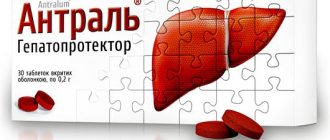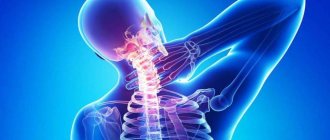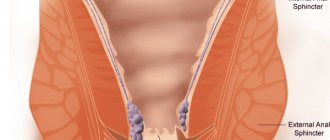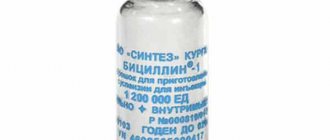Pharmacological properties of the drug Betak
Pharmacodynamics. Selective β-adrenergic receptor blocker without intrinsic sympathomimetic activity. It exhibits membrane stabilizing activity to an insignificant extent. The drug has a hypotensive, antiarrhythmic, antianginal effect. Blocks β-adrenergic receptors of the heart, reduces the formation of cAMP from ATP and intracellular transport of calcium ions, reduces heart rate, reduces conductivity, and reduces myocardial contractility. In the first 24 hours after administration, cardiac output decreases and peripheral vascular resistance increases, the recovery of which occurs after 1–3 days. The antianginal effect is due to a decrease in myocardial oxygen demand due to a decrease in heart rate, prolongation of diastole, and improved myocardial perfusion. In therapeutic doses it does not have a cardiodepressive effect, does not affect glucose metabolism and does not cause sodium ion retention in the body. Practically does not reduce the bronchodilatory effect of β-agonists. Prevents increases in blood pressure associated with physical activity, psycho-emotional stress and other factors. Pharmacokinetics. The drug is absorbed by the body by 100%, bioavailability is 80–90%. In therapeutic doses, it binds to plasma proteins by 50%, the maximum concentration in the blood plasma is achieved 2-4 hours after oral administration. The drug is metabolized in the liver to form 2 inactive metabolites. Excreted from the body in the urine (15% - in the form of unchanged drug and the rest - in the form of metabolites). Penetrates the placental barrier and is detected in high concentrations in breast milk. The half-life is 14–22 hours.
Pharmacological authorities
Pharmacodynamics.
Betaxolol is characterized by three pharmacological properties:
- cardioselective beta-blocking agent;
- there is no partial agonistic activity (it does not show any partial sympathomimetic activity);
- weak membrane-stabilizing effect (similar to quinidine or local anesthetics) at concentrations that exceed recommended therapeutic doses.
Pharmacokinetics.
Absorption. The drug is liquid and fully absorbed after oral administration with a very low first-pass effect through the liver and a very high bioavailability - approximately 85%, which ensures low plasma concentrations. blood in different patients or in one patient with severe stagnation.
Betaxolol is approximately 50% bound to plasma proteins.
Metabolism. The volume of the section becomes approximately 6 l/kg. In the body, betaxolol is mainly converted into inactive metabolites, and only 10-15% of betaxolol is found unchanged. The main way of elimination is through nirk.
Vision. The period of absorption of betaxolol in the body is 15-20 years.
Use of the drug Betak
Inside, regardless of food intake. Usually take 20 mg/day. The maximum daily dose is 40 mg (2 tablets). Patients with renal failure. The dose depends on the state of renal function: with creatinine clearance ≥20 ml/min, no dose adjustment is required. However, from the first week of treatment, clinical observation is necessary until equilibrium levels of drug concentration in the blood are achieved (an average of 4 days). For creatinine clearance ≤20 ml/min, the recommended initial dose is 10 mg/day (1/2 tablet), regardless of the hemodialysis regimen (if any). Patients with liver failure. No dose adjustment is required, but clinical observation is advisable at the beginning of therapy.
Contraindications to the use of the drug Betak
Hypersensitivity to betaxolol or other components of the drug; history of anaphylactic reactions; severe asthma, COPD; decompensated heart failure, cardiogenic shock, AV heart block of II–III degree in patients without a pacemaker; sick sinus syndrome (including sinoatrial block), bradycardia (heart rate ≤45–50 beats/min), arterial hypotension. Pheochromocytoma. Severe forms of Raynaud's syndrome and peripheral circulatory disorders. Congenital galactosemia, glucose-galactose malabsorption syndrome or lactase deficiency. Combination therapy with floctafenine, sultopride, amiodarone, bepridil, diltiazem and verapamil. Monotherapy with the drug for the typical form of Prinzmetal's angina. During pregnancy and breastfeeding. Children.
Features of good stagnation
It is important to avoid using the drug in patients with angina pectoris: acute use of this drug can lead to serious disturbances in heart rhythm, myocardial infarction or death.
Foreign entries when frozen. Administer the drug. Treatment with the drug should not be taken by raptotherapy, especially for patients with ischemic heart disease. The dose must be reduced step by step, over 1-2 days, and if necessary, replacement therapy can be started immediately to stop the progression of angina.
Bronchial asthma and chronic obstructive disease. Beta-blockers can be used only in patients with moderate severity of illness, with the choice of a selective beta-blocker at a low initial dose. Before harvesting, it is recommended to evaluate the respiratory function.
If attacks develop during treatment, bronchodilators (beta2-adrenergic agonists) can be administered.
Heart failure. For the treatment of patients with unrefractory heart failure, Betak, if necessary, can be administered under close medical supervision in low doses, which are gradually advanced.
Bradycardia. The dose needs to be changed because the heart rate will soon become calm below 50-55 beats per hour and the patient will have clinical manifestations of bradycardia.
Atrioventricular block, stage I. Medically, the negative dromotropic effect of beta blockers, Betac should be used with caution in patients with stage I atrioventricular block.
Prinzmetal's angina. The severity and severity of angina attacks may increase when beta blockers are taken in patients with Prinzmetal angina. The use of the drug is possible in cases of illness of moderate severity and for the mind, so treatment should be carried out immediately due to stagnation of vasodilatory properties.
Damage to peripheral blood flow. Beta-blockers can lead to aggravation of patients due to damage to peripheral blood circulation (Raynaud's disease or Raynaud's syndrome, arterial disease or chronic obliterative disease of the arteries of the lower ends). In such cases, it is recommended to use a cardioselective beta-blocker due to the potency of a partial beta-receptor agonist; Recognize this trace with caution.
Pheochromocytoma. When beta-blockers are prescribed for the treatment of arterial hypertension caused by pheochromocytoma, close monitoring of arterial pressure is required.
Summer age patients. In summer age patients, oblique ulcers have strict contraindications. It is necessary to be careful: treatment of patients of the summer age should be started with a small dose and under close supervision (section “Method of administration and dosage”).
Ailments due to nitric deficiency. For patients with narcotic deficiency, dosage must be carefully adjusted to the concentration of creatinine in the blood or creatinine clearance (section “Method of administration and dosage”).
Sickness of blood diabetes. Before the patient is aware of the need to perform self-monitoring of blood glucose levels at the beginning of the day. Prodromal symptoms of hypoglycemia may be masked, especially tachycardia, heart rate and increased sweating (sections “Interactions with other drugs” and “Adverse reactions” ii").
Psoriasis. Prescribing the drug will require a careful assessment of the need for its treatment, including information about the increase in psoriasis patients during treatment with beta-blockers (section “Adverse reactions”).
Allergic reactions. In patients with severe to severe anaphylactic reactions, especially those associated with floctafenine administration (section “Interactions with other medicinal agents”), or during desensitization therapy beta-blockers can lead to a further increase in the reaction and a decrease in the effectiveness of the treatment becoming severe doses of adrenaline.
Complete anesthesia. Beta blockers weaken reflex tachycardia and increase the risk of arterial hypotension. Continued treatment with beta blockers reduces the risk of arrhythmia, myocardial ischemia and hypertensive crises. It is necessary to inform the anesthesiologist about those who are ill and undergo treatment with a beta blocker.
If necessary, treatment and discontinuation of the drug is required for 48 years to restore sensitivity to catecholamines.
Beta-blocker therapy should not be used:
- in patients with coronary insufficiency, in whom it is necessary to take the drug before surgery, a doctor's risk, associated with raptolysis of beta-blockers;
- in case of urgent operations or in cases of seizures, if treatment is impossible. The patient needs to be protected from the effects of activation of the vagus nerve, meaning premedication with atropine, repeated if necessary. For anesthesia, it is necessary to inhibit the processes that depress the myocardium to the minimum, and the loss of blood may be compensated.
It is necessary to avoid the risk of development of anaphylactic reactions.
Ophthalmology. Blockade of beta-adrenergic receptors reduces the internal eye pressure and can lead to a change in the results of screening for glaucoma. The ophthalmologist may provide information about whether the patient is taking betaxolol. For patients who are taking off beta-blockers systemically and who have eye spots, it is necessary to monitor them to determine the possible additive effect of these drugs.
Thyrotoxicosis. Beta blockers mask cardiovascular symptoms of thyrotoxicosis.
Athletes. Athletes are responsible for ensuring that the drug contains the active substance so that they can give a positive reaction during anti-doping control tests.
The drug contains lactose and is contraindicated for use in patients with rare spasmodic forms of galactose intolerance, lactase deficiency or glucose-galactose malabsorption syndrome.
Suspension during pregnancy or breastfeeding.
Vaginism.
Teratogenic aspect. Until now, there is no information about teratogenic effects in humans.
Neonatal aspect. The effect of the beta-blocker lasts for several days after birth in children whose mothers were treated with this medicinal method. Although this excessive effect may not result in clinical consequences, it also avoids the possibility of developing heart failure. In this case, the newborn must be placed in intensive care (section “Overdose”), as well as avoiding the desaturation of plasma exchangers (through the risk of developing an acute swelling of the leg). There is also information about the development of bradycardia, respiratory distress syndrome and hypoglycemia. In connection with this, it is recommended to closely monitor the newborn with specialized doctors (monitoring the heart rate and blood glucose levels during the first 3-5 days of life).
In connection with this, the use of betaxolol during pregnancy is not recommended, due to the risk of seizures, if the severity of the drug outweighs the possible risks.
Goddamn breastfeeding.
Beta-blockers pass into breast milk. During the period of treatment with the drug Betak, the risk of development of hypoglycemia and bradycardia in newborns was not monitored.
This is due to the fluidity of the reaction during treatment with vehicles or other mechanisms.
The study of infusion of betaxolol on the construction of keruvatis by motor transport was not carried out. When using a vehicle or using robots with other mechanisms, it is necessary to take care that any drug taken may result in confusion, impaired visual acuity, and other adverse reactions, which may be negative. influence the fluidity of the reaction during treatment with vehicles or other mechanisms.
Side effects of the drug Betak
From the cardiovascular system: slow heart rate, palpitations, orthostatic hypotension, impaired myocardial conduction, AV block, arrhythmias, development or worsening of symptoms of heart failure, decreased blood pressure, manifestations of vasospasm (deterioration of peripheral circulation, cold extremities). From the respiratory system: difficulty breathing, pharyngitis, rhinitis, upper respiratory tract infections, bronchospasm. From the central nervous system: headache, dizziness, increased fatigue, weakness, sleep disturbance, anxiety, asthenic syndrome, paresthesia of the extremities. From the gastrointestinal tract: dryness of the mucous membranes of the oral cavity, nausea, vomiting, abdominal pain, diarrhea. From the endocrine system: hyperglycemia in patients with non-insulin-dependent diabetes mellitus, hypoglycemia in patients receiving insulin. From the organ of vision: blurred vision, decreased secretion of the lacrimal gland, dry and sore eyes, conjunctivitis. Other: skin rash, urticaria, back pain, arthralgia, decreased libido, decreased potency, withdrawal syndrome (increased angina attacks, increased blood pressure).
Side effects
From the side of the skin and under the skin:
severe reactions, including psoriasis-like rash or acute psoriasis (section “Peculiarities of stagnation”), urticaria, itching, hyperhidrosis.
On the side of the nervous system:
confusion, headache, distal paresthesia, lethargy.
From the side of the organs:
You will notice dryness in your eyes, blurred vision.
Mental disorders:
asthenia, insomnia, fatigue, depression, nightmares, confusion, hallucinations.
On the side of the grass system:
Schulkovo-intestinal disorders (pain in the abdomen, diarrhea, nausea and vomiting).
Metabolic disorders:
Gipoglikemіya, Giperglikemiya, bradycardi (can, jigsaw), navalnica atrioventricular to the proceedings of the pacure of the atrioventricular block, lack of a lack of an arterial piss.
From the side of the vessel:
cold ends, Raynaud's syndrome, increased intermittent vomiting.
Dissolve the side of the respiratory system, chest and mediastinal:
bronchospasm, dyspnea.
On the side of the reproductive system:
Impotence.
Laboratory displays:
The appearance of antinuclear antibodies is rarely avoided, as only in varicose veins were accompanied by clinical manifestations such as systemic worms, which disappeared after treatment.
Special instructions for the use of the drug Betak
The possibility of developing heart failure in the first days of treatment with Betak should be taken into account. Betaxolol can mask hypoglycemia syndromes (for example, tachycardia), therefore, when used in patients with diabetes, it is necessary to regularly monitor blood glucose levels, as well as heart rate. If bradycardia develops, the dose should be reduced and the use of the drug should be discontinued or temporarily suspended. Given the negative dromotropic effect of β-adrenergic receptor blockers, Betak is prescribed with caution to patients with first-degree AV block. In patients with asthma and COPD, the drug can be used only with moderate severity of the disease, giving preference to selective β-adrenergic receptor blockers in a low initial dose. Before starting treatment, external respiration function should be determined. It is recommended to monitor the effectiveness of therapy approximately 3–4 weeks after the start of treatment. If planned surgical treatment is necessary, the drug should be discontinued at least 48 hours before anesthesia. In order to discontinue the use of Betak, the dose of the drug should be gradually reduced over 1–2 weeks to prevent the occurrence of withdrawal syndrome. During pregnancy and breastfeeding. Betak should not be used during pregnancy and breastfeeding; Feeding should be discontinued if the drug is necessary. Children. The drug should not be prescribed to children (the effectiveness and safety of use have not been established). The ability to influence the reaction rate when driving vehicles or working with other mechanisms: usually does not affect, but if dizziness and drowsiness occur, you should refrain from this type of activity.
Interactions with other medicinal drugs and other types of interactions
Bradycardia may be affected by a number of medications: beta-blockers, class Ia antiarrhythmic drugs (quinidine, disopyramide), class III (amiodarone and sotalol), class IY (diltiazem and verapam). silt), as well as digitalis glycosides, clonidine, guafancin, mefloquine and Cholinesterase inhibitors, which are used for the treatment of Alzheimer's disease.
One-time administration of the drug Betak is contraindicated with lower prescribed drugs.
Floctafenine.
In times of shock or arterial hypotension, caused by floctafenine, beta-blockers cause a decrease in compensatory cardiovascular reactions.
Sultopride.
The disruption of heart automatism (supermiral bradycardia) is due to the additive effect of a rapid change in frequency.
It is not recommended to take the drug Betak with lower prescribed drugs.
Calcium channel blockers (bepridil, diltiazem and verapamil).
Impaired automatism (supramerial bradycardia, sinus node arbor), sinoatrial and atrioventricular conduction, heart failure (synergistic action). Such combinations can be combined only with close clinical control and electrocardiographic monitoring, especially for patients with summer age or kidney disease.
Amiodarone.
Impairment of speed, automaticity and conductivity (suppression of sympathetic compensatory mechanisms).
Use caution when using Betak with the prescribed drugs.
Inhalation anesthetics that act as halogen inhibitors.
Beta-adrenergic blockers cause a decrease in cardiovascular compensatory reactions (during the hour of surgery, suppression of beta-adrenergic receptors can be achieved with the help of additional beta-stimulants). As a rule, therapy with beta blockers should not be started immediately, but sudden use of the drug should not be avoided in any case. It is necessary to inform the anesthesiologist about the procedure that will be performed.
Drugs that can provoke paroxysmal ventral tachycardia of the “torsades de pointes” type (cream sultopride).
Antiarrhythmic drugs of class Ia (quinidine, hydroquinidine and disopyramide) and class III (amiodarone, dofetilide, ibutilide, sotatol);
types of neuroleptics of the phenothiazine group (chlorpromazine, cyamemazine, levomepromazine, thioridazine), benzamides (amisulpride, sulpiride, tiapride), butyrophenones (droperidol, haloperidol), other neuroleptics (pimozide) and other drugs (cysa pd, diphemanil, internal erythromycin, halofantrine, mizolastine, moxifloxacin, pentamidine, internal spiramycin and vincamine). Precipitation of the development of scapular arrhythmia and especially paroxysmal tachycardia of the “torsades de pointes”
(hypokalemia is a provoking factor). Clinical and electrocardiographic monitoring is required.
Propaphenone.
Impairment of speed, automaticity and conductivity (suppression of sympathetic compensatory mechanisms). Necessary clinical and electrocardiographic monitoring.
Baclofen.
Strengthening antihypertensive action. It is necessary to control arterial pressure and adjust the dose of antihypertensive drugs.
Insulin and antidiabetic sulfonamides.
All beta blockers can mask several symptoms of hypoglycemia, such as tachycardia and heart palpitations (section “Features of hypoglycemia”). The patient is aware of the need to strengthen self-monitoring of blood sugar levels.
Cholinesterase inhibitors (ambenomium, donepezil, galanthamine, neostigmine, pyridostigmine, rivastigmine, tacrine).
Risk of increased bradycardia (additive action). Regular clinical monitoring is required.
Antihypertensive agents of the central nervous system (clonidine, apraclonidine, alpha-methyldopa, guanfancin, moxonidine, rilmenidine).
The significance of the displacement of arterial pressure during acute administration of an antihypertensive drug in the central system. It is necessary to avoid the effects of antihypertensive drugs and carry out clinical monitoring.
Lidocaine (internally).
Increased concentration of iceocaine in blood plasma with a possible increase in undesirable neurological and cardiac effects (reduced metabolism of iceocaine in the liver). Clinical and electrocardiographic monitoring and, possibly, increased concentrations of lidocaine in blood plasma are recommended both before and after treatment with beta-blockers. If necessary, adjust the dose of iceocaine.
Combinations that require special respect.
Non-steroidal anti-inflammatory drugs (systemic drugs), including selective COX-2 inhibitors.
Reducing the hypotensive effect (suppression of vasodilating prostaglandins by non-steroidal anti-inflammatory drugs and suppression of sodium and pyrazolone compounds).
Calcium channel blockers (dihydropyridines).
Arterial hypotension, insufficiency of blood flow in patients with latent or uncontrolled heart failure. Treatment with beta-blockers can minimize the sympathetic reflex mechanisms that are triggered during elevated hemodynamic reactions.
Antidepressants, combined with imipramine, neuroleptics.
Strengthening the hypotensive effect and reducing orthostatic hypotension (additive action).
Mefloquine.
Risk of bradycardia (additive to the development of bradycardia).
Dipyridamole (internally).
Increased antihypertensive effect.
Alpha blockers, which are commonly used in urology (alfuzosin, doxazosin, prazosin, tamsulosin, terazosin).
Increased antihypertensive effect. Increased risk of orthostatic hypotension.
Amifostin
. Increased antihypertensive effect.
Cardiac glycosides.
The combination may shorten atrioventricular conduction and cause bradycardia.
Fingolimod.
Coadministration of fingolimod with beta blockers may potentiate the bradycardic effect and this combination is not recommended. If there is a need for one-hour stagnation, continuous monitoring is required from the beginning of the soaking, it is recommended to carry out at least nightly monitoring.
Iodine contrasting speeches.
In response to shock or arterial hypotension due to the administration of aqueous contrast agents, beta blockers cause a decrease in cardiovascular compensatory reactions.
If possible, treatment with beta blockers should be started before radiographic follow-up. If treatment is necessary, the doctor is responsible for the possibility of intensive therapy.
Corticosteroids and tetracosactides.
Reducing the antihypertensive effect (water and sodium supplementation in combination with corticosteroids).
Drug interactions Betak
With simultaneous use of Betak with nifedipine and antipsychotics, orthostatic hypotension may develop. NSAIDs, when used simultaneously, weaken the hypotensive effect of the drug due to sodium and water retention and inhibition of prostaglandin synthesis in the kidneys. Estrogens also reduce the hypotensive effect of Betak (due to sodium retention). Betak increases the concentration of lidocaine in the blood plasma, and sulfasalazine increases the concentration of Betak in the blood plasma. Reserpine, when used concomitantly with betaxolol, increases the risk of hypotension and bradycardia.
Overdose of the drug Betak
The use of Betaca in high doses can cause bradycardia, hypotension, congestive heart failure, bronchospasm and hypoglycemia. In case of overdose, you must stop using the drug. In case of bradycardia or an excessive decrease in blood pressure, it is necessary to administer 1–2 mg of atropine intravenously, 1 mg of glucagon (the drug is repeated if necessary), in case of severe overdose, a slow infusion of 25 mcg of isoprenaline is administered or 2.5–10 mcg/kg/min of dobutamine is administered . For severe hypotension, it is recommended to administer dopamine, dobutamine or norepinephrine. For congestive heart failure, therapy consists of the use of digitalis and diuretics.





